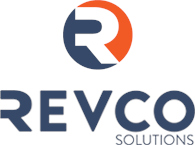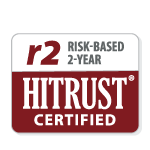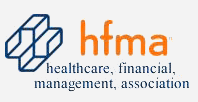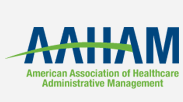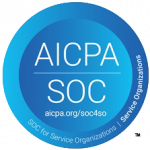
In today’s complex healthcare environment, efficient billing practices are not just vital to an organization’s financial health—they’re also key to creating a positive patient experience. Whether in large health systems or small physician practices, a streamlined billing cycle helps reduce patient stress, confusion, and unexpected costs. By combining technology with transparent communication and thoughtful, patient-friendly practices, healthcare organizations can not only optimize revenue cycle management (RCM) but also foster trust and satisfaction among the patients they serve.
This article outlines three essential strategies to improve the billing cycle and strengthen your organization’s overall patient care and satisfaction.
1. Strengthen Front-End Processes with Accurate Data Collection
Understanding healthcare billing extends far beyond the realm of mere invoice generation. Meticulous record-keeping and transparent communication between healthcare providers, their staff, and patients can significantly reduce confusion and increase patient satisfaction. Sounds obvious, right? Well, if it were that simple, we wouldn’t be here.
Did you know that 35% of all denied claims result from inaccurate patient identification, costing the average hospital $2.5 million and the U.S. healthcare system over $6.7 billion annually? Additionally, on average, hospitals have 30% of all claims denied, with 35% of these denials attributed to inaccurate patient identification or incomplete patient information.
Billing errors often originate not from complex coding issues, although that is something we’ll get to next, but from something as simple—and as critical—as inaccurate data collection during patient intake. When front-end processes fail to capture essential information like insurance details, patient demographics, or authorization requirements correctly, it sets off a chain reaction of errors throughout the billing cycle. Misspelled names, outdated policy numbers, or missing referral information can lead to denied claims, delayed reimbursements, and frustrated patients. Ensuring accuracy at the intake stage is foundational to successful medical billing, making front-desk staff training and robust verification procedures essential for minimizing costly mistakes and safeguarding the integrity of the revenue cycle.
The foundation of a healthy billing cycle begins with accurate patient data capture during registration and scheduling. Errors in demographics, insurance information, or eligibility verification can cascade into costly delays and denials.
Actionable Steps:
- Implement real-time eligibility checks.
- Standardize patient intake procedures.
- Train front-desk staff on insurance nuances and documentation requirements.
A clean claim starts with clean data. Front-end accuracy sets the tone for the rest of the billing cycle.
2. Optimize Medical Coding Accuracy
Once accurate patient data is captured during intake, the next critical step is ensuring precision in clinical documentation and medical coding.
Medical coders and billers play a vital role in translating healthcare services into standardized codes for claims and managing patient accounts and insurance reimbursements. They are responsible for translating every patient encounter into standardized medical codes, including procedure codes and diagnosis codes like those found in the Current Procedural Terminology (CPT) and International Classification of Diseases (ICD). This translation is vital for the healthcare provider to accurately bill for the medical services provided but often falls short of expectations due to its complexity.
According to the Medical Billing Advocates of America, up to 80% of medical bills may contain errors or overcharges. With tens of thousands of procedure and diagnosis codes in use, even minor mistakes such as a simple number swap—can lead to significant billing discrepancies. While these errors may be understandable from a technical standpoint, they can be deeply frustrating for patients, often resulting in confusion, dissatisfaction, and a loss of trust in your practice. So, what can you do?
Coding errors are a leading cause of denied or underpaid claims. Ensuring medical coders are well-trained and supported with updated tools is vital for accuracy and compliance.
Actionable Steps:
- Invest in ongoing coder education on CPT, ICD-10, and HCPCS updates.
- Consider AI-powered coding assistants and validation tools.
- Audit coding accuracy regularly to identify improvement areas.
Accurate coding improves cash flow and compliance by reducing costly rework and appeal processes, leading to happier patients.
performance-driving RCM insights?
3. Foster Transparent, Patient-Centric Billing Practices
At the heart of every successful billing strategy is the patient. Transparent, patient-centric billing not only reduces confusion but also builds lasting trust between healthcare providers and the communities they serve. When patients clearly understand what they owe, why they owe it, and how they can pay, it minimizes billing disputes and improves collection rates.
In fact, a 2024 survey by Cedar revealed that consumers stay loyal when billing is transparent and easy. They report:
- 96% of consumers say that coordination on billing and payment between their provider and payer is important to their overall satisfaction with their payer
- 49% of consumers have left a positive review for their provider if they had a good billing experience
- 43% of consumers say they would be more likely to pay their bills faster if they were provided with clear explanations about how deductibles and out-of-pocket maximums impact the bill
Offering clear, itemized statements, flexible payment options, and open lines of communication empowers patients to take control of their financial responsibilities. In an era where consumer expectations are higher than ever, prioritizing clarity and compassion in billing isn’t just good practice—it’s a competitive advantage.
Patients are increasingly responsible for a larger share of healthcare costs, showing a trend in concerns for affordability. According to AHA’s 2025 Environmental Scan:
- 47% of adults report that it is difficult to afford healthcare costs
- 1 in 4 adults say that in the past 12 months they have skipped or postponed getting health care they needed because of cost
- 1 in 5 adults have not filled a prescription because of cost
- 48% of insured adults worry about affording their monthly health insurance premiums
- 41% of adults report having debt due to medical bills
In an era marked by rising healthcare costs and financial uncertainty, clear and compassionate communication about billing and payment options is more important than ever. By proactively addressing patient concerns and offering transparent, flexible solutions, healthcare organizations can not only enhance patient satisfaction but also reduce confusion and minimize the need for collections.
Actionable Steps:
- Provide easy-to-read bills with itemized services and due dates.
- Offer online payment portals and flexible payment plans.
- Educate patients on insurance coverage, co-pays, and deductibles during check-in.
A transparent billing experience builds trust, improves collections, and enhances the patient-provider relationship.
Conclusion: Building a Better Billing Cycle Through Strategic RCM
Improving the billing cycle is not just about getting paid—it’s about delivering a better patient experience and maintaining financial sustainability. By refining front-end processes, leveraging technology, and adopting a patient-first approach, healthcare organizations can transform billing from a pain point into a strategic advantage.
Ready to enhance your billing process? Revco Solutions partners with healthcare organizations to modernize RCM with patient-centric technology and expert support. Discover how we can help streamline your revenue cycle.
